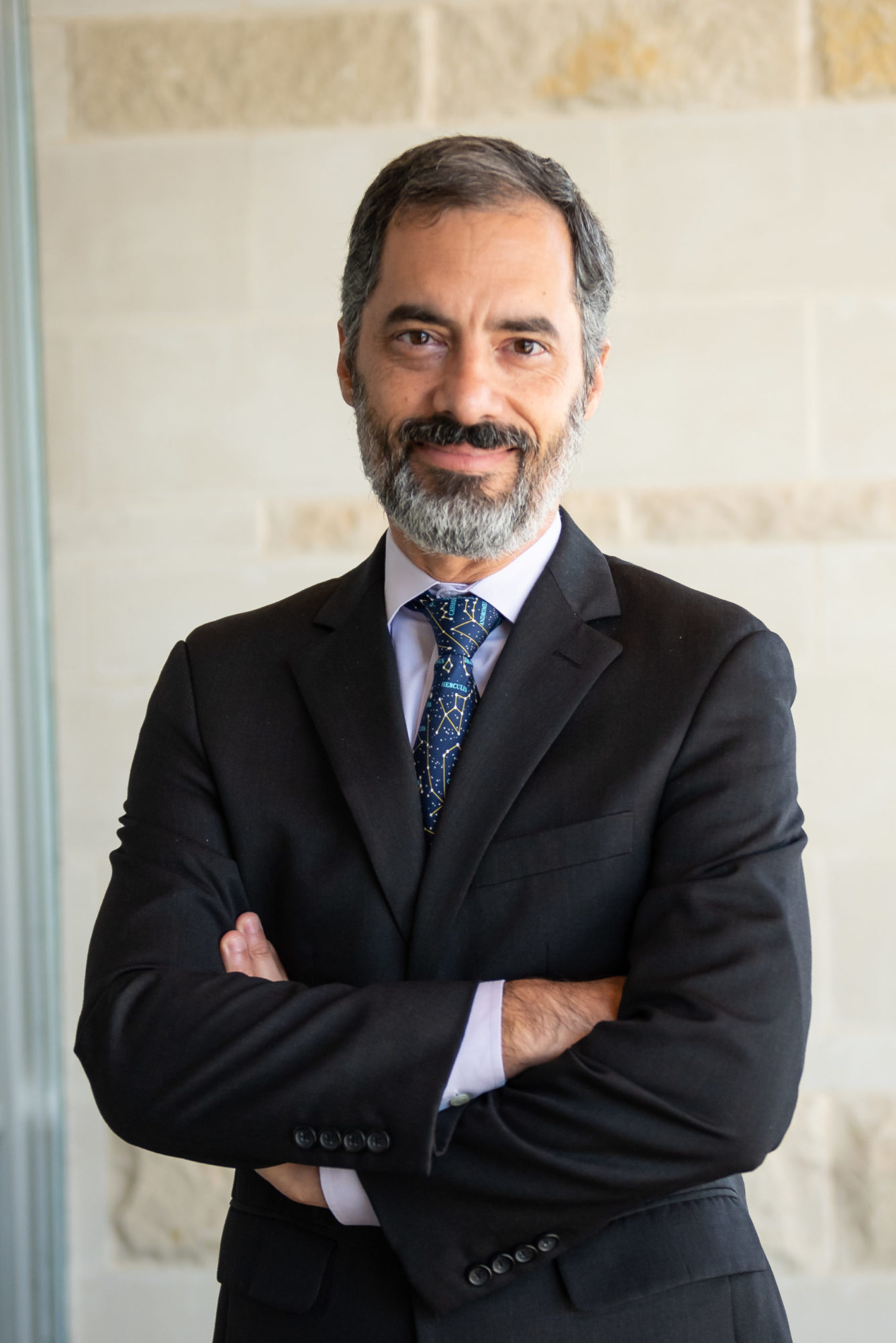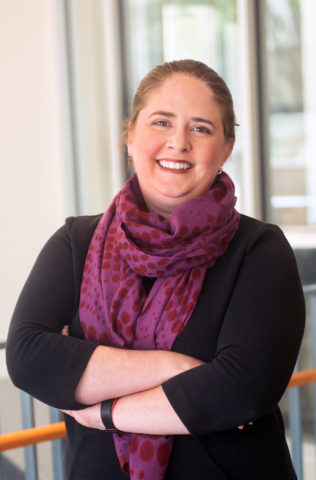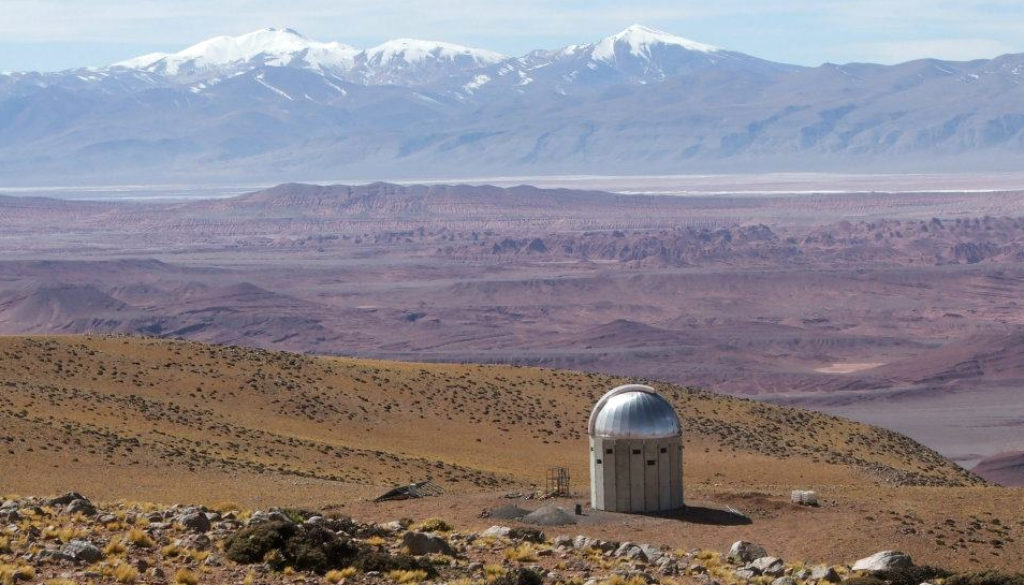![Collaborators in the TOROS project to study gravitational wave events in deep space]()
(From left:) Texas A&M University astronomer Lucas Macri, University of Texas Rio Grande Valley astronomer Mario Díaz and University of Córdoba astronomer Diego García Lambas, collaborators in the TOROS project to study gravitational wave events in deep space. (Credit: OAC UNC.)
Six years ago, two Texas astronomers — Texas A&M University’s
Lucas Macri and the University of Texas Rio Grande Valley’s Mario Díaz — teamed with
Universidad Nacional de Córdoba astronomer Diego Garcia Lambas in an effort to get ahead of what they saw as the next big cosmic thing: gravitational-wave astronomy.
In the years since, their collaboration, called the
Transient Optical Robotic Observatory of the South (TOROS), has searched for electromagnetic counterparts to gravitational-wave sources using a variety of telescopes across the globe while also pursuing funding opportunities to establish their own state-of-the-art telescope and camera in one of the best astronomical sites on Earth, Cordón Macón in northwestern Argentina.
 Dr. Lucas Macri
Dr. Lucas Macri
Their persistence recently paid off in the form of a $516,000 award from the
National Science Foundation, $175,000 of which will be earmarked to Texas A&M astronomers Darren DePoy and Jennifer Marshall and their team within Texas A&M’s
Charles R. ’62 and Judith G. Munnerlyn Astronomical Instrumentation Laboratory. They will use the funds to build a prime-focus corrector, a precisely crafted set of lenses that will maximize the field of view of a top-of-the-line 100-megapixel charge-coupled device (CCD) camera which will serve as the dedicated instrument of the TOROS telescope.
Construction on Cordón Macón started earlier in 2019, thanks to funding provided by the Argentine National Science Foundation and previous NSF funding to Diaz as the overall principal investigator of the TOROS project. The telescope is expected to be operational in early 2020, initially relying on more modest instrumentation while DePoy and Marshall build, integrate and test the prime-focus camera.
 Dr. Jennifer Marshall
Dr. Jennifer Marshall
“TOROS will make important contributions to the follow-up of gravitational wave sources and will help develop the next generation of big data astronomers across diverse communities in Aggieland, Argentina and the Rio Grande Valley,” Macri said. “There are many challenges associated with searching large areas of the sky for fast-evolving astronomical sources, making this a great interdisciplinary astrostatistics project for the Texas A&M College of Science. We are grateful for the bi-national support that this project has received.”
When a pair of neutron stars collided in the galaxy NGC 4993 in 2017 in perhaps the best-known gravitational wave event to date, Macri and his TOROS collaborators used the T80-South telescope located at the Cerro Tololo Inter-American Observatory (CTIO) in Chile and the Bosque Alegre telescope located in Argentina to study the fast-fading kilonova at various wavelengths, which is useful to rule out various models for the explosion. He presented their results, published in
The Astrophysical Journal Letters, as part of a Gravitational Wave Astrophysics Conference sponsored by the International Astronomical Union and hosted by Louisiana State University.
Armed with the recent NSF funding and the collaboration’s collective expertise, Texas A&M astronomers are confident TOROS’ own telescope will soon be in the universal hunt.
“We look forward to developing this premier instrument for TOROS and deploying it on Cordón Macón,” said Marshall, who along with DePoy, Macri and then-Ph.D. student Ryan Oelkers traveled to Argentina in mid-2013 to carry out test astronomical observations from the area.
 Dr. Darren DePoy
Dr. Darren DePoy
“The Macón site has a lot of promise, as evidenced by its finalist status as a possible site for the billion-dollar European Extremely Large Telescope,” added DePoy, who previously served as project scientist for the 570-megapixel camera behind the U.S. Department of Energy- and NSF-funded
Dark Energy Survey.
To learn more about TOROS, which involves about 50 astronomers from all over the world, and the recent NSF award, see the
official press release from UTRGV.
# # # # # # # # # #
About Research at Texas A&M University: As one of the world’s leading research institutions, Texas A&M is at the forefront in making significant contributions to scholarship and discovery, including in science and technology. Research conducted at Texas A&M generated annual expenditures of more than $922 million in fiscal year 2018. Texas A&M ranked in the top 20 of the National Science Foundation’s Higher Education Research and Development survey (2017), based on expenditures of more than $905.4 million in fiscal year 2017. Texas A&M’s research creates new knowledge that provides basic, fundamental and applied contributions resulting, in many cases, in economic benefits to the state, nation and world. To learn more, visit
http://research.tamu.edu.
-aTm-
Contact: Shana K. Hutchins, (979) 862-1237 or shutchins@science.tamu.edu or Dr. Lucas Macri, (979) 845-7362 or lmacri@tamu.edu
The post
Cross-Texas Astronomical Collaboration Receives NSF Support to Study Gravitational Wave Sources appeared first on
College of Science.




